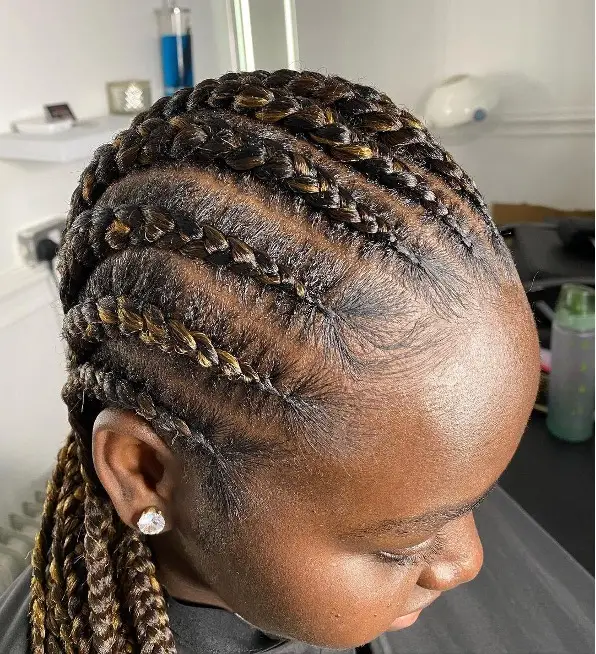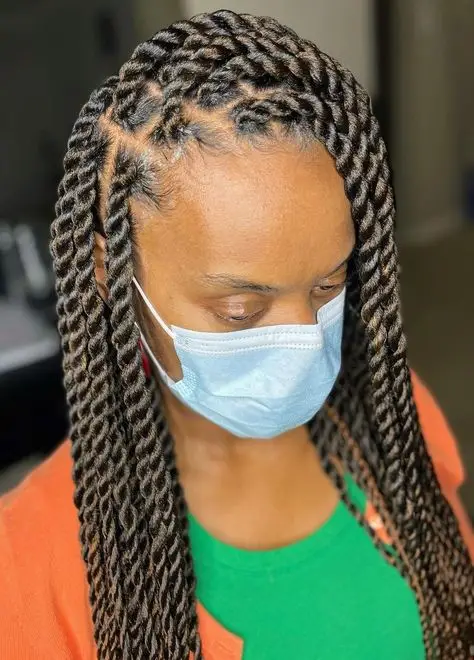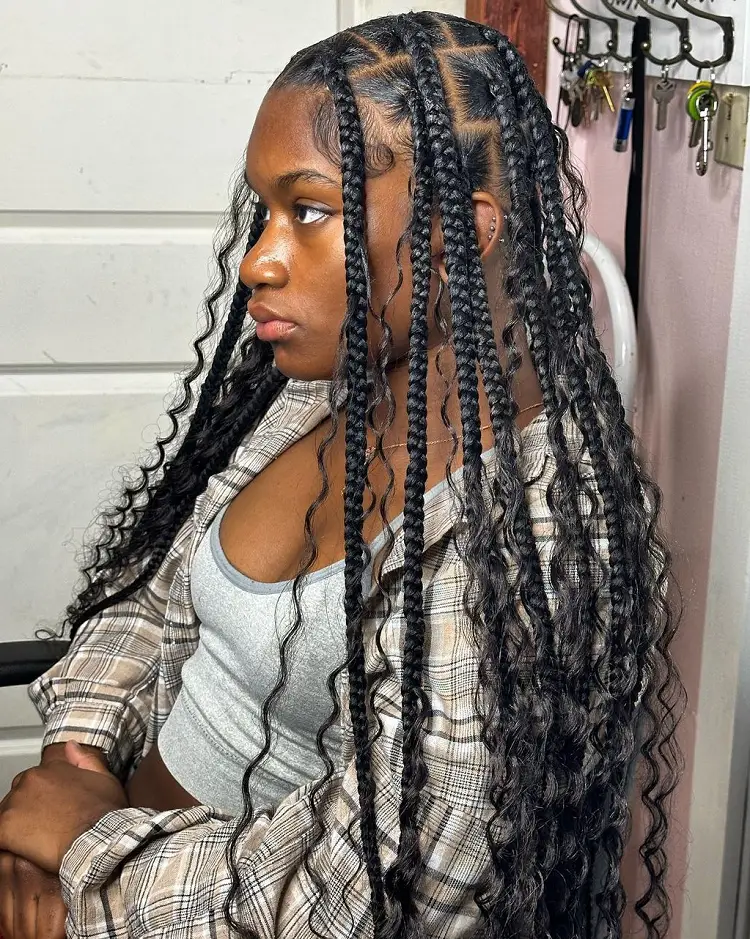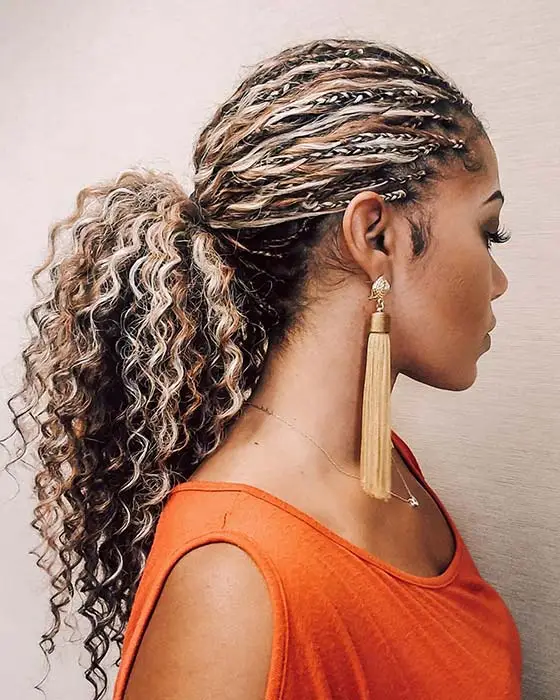It takes anywhere between 2 minutes to 15 hours to braid hair depending on the style of braid that you choose. The Yarn Braid is the most time consuming of all braid styles, taking between 7 hours to 15 hours to create. The Rope braid and the Half-Up Crown Braid, on the other hand, can be made the quickest.
Still confused about how long does it take to braid hair? Do not worry. Read this article to learn more.
Key Takeaways
- The Yarn Braid takes 7 to 15 hours to perform, making it one of the most time consuming braids.
- Rope braid can be made in just about 2 minutes.
- The time needed to braid can vary depending on the length and type of hair and the skill of the braider.
How Long Does It Take to Make Different Braids?
The time it takes to make braids depends on the type of braid. Here is a table showing the time it takes for making different braids:
| Type of Braid | Approximate Time Needed |
| Knotless braids | 3 to 12 hours |
| Fishtail braid | 10 to 15 minutes |
| Rope braid (Twist braid) | 2 minutes |
| Half-Up Crown Braid | 2 To 3 Minutes |
| Double Side Front Braid | 5 Minutes |
| Upside Down Braid Bun | 8 Minutes |
| Half-Up Bun Braid | 7 To 10 Minutes |
| French Braid | 7 To 10 Minutes |
| Dutch Braid | 10 To 15 Minutes |
| Cornrows | 15 Minutes To 4 Hours |
| Twists | 5 To 6 Hours |
| Box Braid | 4 To 8 Hours |
| Jumbo Box Braid | 3 To 4 Hours |
| Faux Locs | 4 To 9 Hours |
| Yarn Braid | 7 To 15 Hours |
| Crochet Braids | Around 3 Hours |
| Micro Braid | 5 To 12 Hours |
| Lemonade Braid | 3 To 4 Hours |
| Tree Braid | 3 To 6 hours |
It can take you anywhere between 2 minutes to 15 hours to tie a braid. Confused about the name of the hair braid that you want? Here is a description of each knot type:
Knotless braids:

A variation of box braids that are created using a feed-in braid technique instead of a knot at the root. They are less heavy on the scalp and can last up to 6 weeks depending on hair texture and maintenance
Fishtail braid:

A type of hairstyle that involves weaving strands of hair together to create an intricate appearance. It can be worn as a ponytail or a French style that begins at the crown of the head
Rope braid (Twist braid):

A plait made out of two twisted hair strands. It is a false braid and can be done in different styles, such as French rope braid, intricate rope braid ponytail, and double Rapunzel side rope braid
Half-Up Crown Braid:

A half-up version of the Dutch crown braid that starts with a deep side part and is braided across the crown of the head. It can be worn with a flower crown or without
Double Side Front Braid:

A hairstyle that involves creating two French braids on either side of the head, starting from the front and working towards the back
Upside Down Braid Bun:

A hairstyle that involves flipping the head upside down and creating a Dutch braid from the nape of the neck to the crown of the head. The braid is then twisted into a bun
Half-Up Bun Braid:

A hairstyle that involves creating a half-up ponytail and then braiding the ponytail into a bun
French Braid:

A type of braid that involves weaving three strands of hair together, starting at the crown of the head and working towards the nape of the neck. It is a classic and versatile hairstyle that can be worn in different variations
Dutch Braid:

A type of braid that is similar to the French braid, but the strands are crossed under each other instead of over. It is also known as an inverted French braid
Cornrows:

A type of braid that involves creating small, tight braids that are close to the scalp. They can be done in different patterns and styles and are often worn as a protective hairstyle
Twists:

A type of hairstyle that involves twisting two strands of hair together. They can be done in different sizes and styles, such as Senegalese twists and micro twists
Box Braid:

A type of braid that involves creating square-shaped sections and braiding each section with extensions. They can be done in different sizes and styles, such as knotless box braids and jumbo box braids
Jumbo Box Braid

A type of box braid that is larger in size than traditional box braids. They can be done with or without extensions and can be styled in different ways
Faux Locs:

A type of hairstyle that involves wrapping synthetic hair around sections of natural hair to create the appearance of dreadlocks. They can be done in different sizes and styles
Yarn Braid:

A type of braid that involves using yarn instead of extensions to create the braid. They can be done in different colors and styles
Crochet Braids:

A type of hairstyle that involves crocheting extensions into cornrows. They can be done in different styles and textures
Micro Braid:

A type of braid that involves creating small braids that are close to the scalp. They can be done with or without extensions and can take several hours to complete
Lemonade Braid:

A type of braid that is similar to cornrows but with a side part and zigzag pattern. It was popularized by Beyoncé in her “Lemonade” album
Tree Braid:

A type of braid that involves creating small braids that are attached to a cornrow base. They can be done with or without extensions and can be styled in different ways
What Influences The Time Needed to Braid Hair?
The time needed to braid hair can be influenced by several factors. Here are some of the factors that can affect the time needed to braid hair:
- Size of braids: Generally, the larger the braids, the less time they will take to make. Smaller braids, on the other hand, can take longer to make.
- Type of braid: Different types of braids can take different amounts of time to make. For example, knotless box braids and micro braids can take several hours to complete, while French and Dutch braids can take as little as 5-10 minutes.
- Hair length: Longer hair will take more time to braid. Shorter hair, on the other hand, can be braided quickly.
- Hair thickness: The texture of the hair can also affect how long you need to make a braid. Coarser hair may hold twists better, while finer hair may hold braids better.
- Skill level of braider: The skill level of the person doing the braiding can also affect how long it takes to complete a braid. Beginners may take longer to complete a braid than someone who is more experienced.
These factors together can determine how quickly you can braid your hair.
Frequently Asked Questions
How Long Should Hair Stay Braided?
Hair should stay braided for less than 8 weeks. Otherwise, your new hair growth becoming overly stretched and vulnerable. Eventually, this excessive strain can lead to breakage, causing considerable harm to your hair.
Does Hair Grow Faster in Braids?
No, hair does not grow faster in braids. The rate of your hair growth is primarily influenced by genetic factors, whereas aspects of your lifestyle such as your diet and stress levels can contribute to thinning and breakage..
Should I Get A Haircut before Braids?
Yes, you should get a haircut before braids. Before getting a protective hairstyle, you should eliminate any knots and split ends. Taking the step of trimming your hair before braiding can contribute to a more polished and tidy look. It can also prevent excessive breakage or shedding during the braiding process.
Conclusion
So, now you know all there is to know about how long it takes to braid hair. Hair braiding is becoming very popular among people of all demographics. But it can be difficult to braid your hair because of the time it takes to perform. I hope this article helped you to easily determine the time needed to make a hair braid.
That is all for today. Thank you for reading my article. Goodbye and good luck with your new hair braid!
- Crochet Braid Hair Cost: Hope for a Style to Slay!! - January 9, 2024
- Best Braid Pattern For Crochet: Hair-Styling Tips And Tricks - January 3, 2024
- How To Braid Hair For Crochet: Best Hair-Styling Tips! - December 26, 2023
